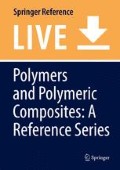Abstract
Metals are by far still the most important materials in heat management with extremely high intrinsic heat conductivities (aluminum metal in the range of 200 W/m K). Their severe drawbacks on the other side are their high price, their high density (weight), and their high electrical conductivities.
Thermoplastics and thermosets are widely used in E&E (electric and electronic) applications. Their low thermal conductivity in the range of only 0,2–0,4 W/(m K) is unfortunately linked to their chemical structure.
Materials for thermal management in direct contact with heat sources have to transport heat by conduction as fast and effectively as possible away from them. Literature and experiments reveal that for effective removal of heat, heat conductivities exceeding 1–2 W/m K already drastically reduce temperature at the contact area between heat source and heat sink.
Since polymers offer complete freedom of design (but offering only heat conductivities in the range of 0,2–0,4 W/m K) in contrast to metal, using appropriate additives to increase their insufficient heat conductivity will be the future in integrated heat sink/housing design for LEDs, electric motors/engines, as well as for luminaires and other electronic parts. To achieve this, new rules of design, recipes, compounding, and molding have to be applied to the polymers.
Heat conductive additives for polymers differ heavily in price and performance. Performance must never be measured by heat conductivity alone but especially for housings, parts under mechanical stress or heat sinks also mechanical properties have to be taken into account. For electrically insulating solutions, alumosilicate shows equilibrated properties; heat conductivities of 2–3 W/m K can be achieved. Adding hexagonal boron nitride to an alumosilicate/PA compound can increase heat conductivities even further without deterioration of mechanical properties and with only moderate effect on the price.
The use of thermally conductive plastics creates a whole series of important advantages. Besides the benefits of lightweight construction, the use of plastics offers the possibility of producing complex geometries quickly and cost efficiently by means of injection molding or casting technologies. This new development will influence heavily forthcoming solutions in electronics, electrical devices, automotive industry, e-mobility, and like trends.
References
Heinle C (2012) Simulationsgestützte Entwicklung von Bauteilen aus wärmeleitenden Kunststoffen. Thesis Technischen Fakultät der Universität Erlangen-Nürnberg
HPF The Mineral Engineers (2014a) Alumosilicate* – Mineralische Füllstoffe für wärmeleitfähige Compounds; Seminar: Wärmeleitende Kunststoffe – wie soll das gehen?*. Kunststoff Institut, Lüdenscheid
HPF The Mineral Engineers (2014b) Alumosilicate* for improvement of the thermal conductivity of plastics. Technical information 8206
Zilles JU (2014) Adding heat management capabilities to thermoplastics and thermosets. In: LPS 2014 LED professional symposium, conference proceedings, Bregenz, 30 Sept–2 Oct 2014
Author information
Authors and Affiliations
Corresponding author
Editor information
Editors and Affiliations
Rights and permissions
Copyright information
© 2016 Springer-Verlag Berlin Heidelberg
About this entry
Cite this entry
Zilles, J.U. (2016). Thermally Conductive Additives. In: Palsule, S. (eds) Polymers and Polymeric Composites: A Reference Series. Springer, Berlin, Heidelberg. https://doi.org/10.1007/978-3-642-37179-0_37-3
Download citation
DOI: https://doi.org/10.1007/978-3-642-37179-0_37-3
Received:
Accepted:
Published:
Publisher Name: Springer, Berlin, Heidelberg
Online ISBN: 978-3-642-37179-0
eBook Packages: Springer Reference Chemistry and Mat. ScienceReference Module Physical and Materials ScienceReference Module Chemistry, Materials and Physics
Publish with us
Chapter history
-
Latest
Thermally Conductive Additives- Published:
- 02 May 2016
DOI: https://doi.org/10.1007/978-3-642-37179-0_37-3
-
Thermally Conductive Additives
- Published:
- 03 July 2015
DOI: https://doi.org/10.1007/978-3-642-37179-0_37-2
-
Original
Thermally Conductive Additives- Published:
- 07 May 2015
DOI: https://doi.org/10.1007/978-3-642-37179-0_37-1

